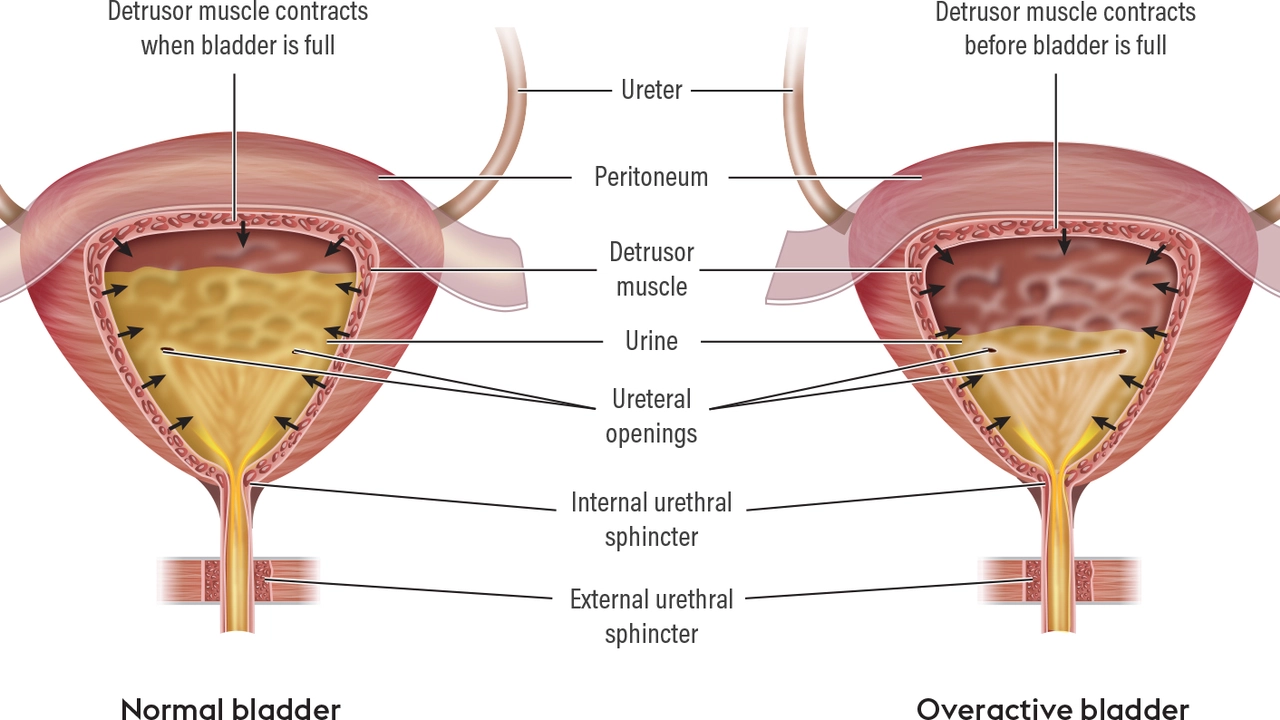
Understanding Bladder Spasms
Before we delve into how to manage bladder spasms naturally, it's important to understand what bladder spasms are. These are sudden and involuntary contractions of the muscles in the bladder. They can result in a strong urge to urinate, even when there's little urine in the bladder. This can be incredibly inconvenient, not to mention embarrassing. It's important to note that bladder spasms aren't a disease in themselves, but a symptom of other conditions such as urinary tract infections, interstitial cystitis, or nerve damage.
Identifying the Causes of Bladder Spasms
Bladder spasms can be caused by a variety of factors. Some of the most common causes include urinary tract infections, bladder stones, bladder cancer, and nerve damage related to conditions such as diabetes, stroke, or multiple sclerosis. Certain medications can also cause bladder spasms, as can surgery on the bladder or nearby organs. It's important to identify the underlying cause of your bladder spasms so you can effectively manage them.
Adopting a Bladder-Friendly Diet
What you eat and drink can have a significant impact on your bladder health. Certain foods and beverages can irritate the bladder and trigger spasms. These include caffeinated drinks, alcohol, spicy foods, citrus fruits, and artificial sweeteners. By reducing your intake of these items and increasing your water consumption, you can help manage your bladder spasms naturally. Drinking plenty of water can also help flush bacteria out of your urinary system and reduce the risk of infections, which can cause bladder spasms.
Practicing Bladder Training
Bladder training is a behavioral therapy that can help manage bladder spasms. This involves scheduling your bathroom visits and gradually increasing the time between them to strengthen your bladder muscles. Start by going to the bathroom every hour, then gradually increase the interval by 15 minutes each week until you can comfortably go three to four hours without urinating. This can help reduce the frequency and urgency of bladder spasms.
Embracing Pelvic Floor Exercises
Pelvic floor exercises, also known as Kegel exercises, can help strengthen the muscles that control urination and reduce bladder spasms. To do these exercises, squeeze the muscles you would use to stop urinating, hold for a few seconds, then release. Repeat these exercises several times a day. You can do them anywhere and at any time, making them a convenient natural remedy for bladder spasms.
Considering Herbal Remedies
Some herbs are known for their bladder-soothing properties and can help manage bladder spasms. For example, herbs like pumpkin seed extract, Gosha-jinki-gan (a traditional Japanese herbal medicine), and corn silk have been used for centuries to treat urinary issues. However, always consult your healthcare provider before starting any new treatment, as these can interact with other medications and cause side effects.
Utilizing Biofeedback Therapy
Biofeedback therapy is a non-invasive treatment that uses sensors and visual or auditory feedback to teach you how to control your body's functions, including bladder contractions. This therapy can help you understand how your body works and make conscious changes to improve your health. In the case of bladder spasms, biofeedback can help you gain better control over your bladder muscles and reduce spasms.
Seeking Professional Help
If natural remedies and lifestyle changes aren't enough to manage your bladder spasms, don't hesitate to seek professional help. A healthcare provider can help identify the underlying cause of your spasms and recommend appropriate treatments. This might include medications, physical therapy, or in some cases, surgery. Remember, bladder spasms can be a symptom of a serious condition, so it's important to get checked out if you're experiencing them regularly.

This is just Big Pharma's way to sell you more pills. They don't want you to know that bladder spasms are caused by 5G towers messing with your pelvic nerves. Drink distilled water and wrap your lower abdomen in aluminum foil. Works for me.
i just wanted to say that the pelvic floor exercises part was super helpful for me! i was skeptical at first but like... after 3 weeks of doing them while watching netflix? my urgency dropped like 80%. also, i typoed 'bladder' as 'bladdder' like 5 times but you get the idea lol
Kegels? Please. You're not strengthening anything. You're just tensing up nerves that are already overstimulated from glyphosate in your kale smoothies. The real fix is magnesium citrate + ditching all processed foods. Also, stop drinking water after 6 PM. Your bladder isn't a reservoir, it's a sensor.
I tried all this and my husband still won't stop leaving the toilet seat up. It's not the bladder spasms that are ruining my life, it's the lack of emotional support. Also, I cried in the shower yesterday because I had to go at 3 AM and no one noticed. #BladderTrauma
There's something quiet about learning your body's rhythms. Not fighting it. Not forcing it. Just... listening. The spasms aren't enemies. They're signals. I used to dread them. Now I pause. Breathe. Ask what they're trying to tell me. It's not about control. It's about harmony.
Just wanted to add that pumpkin seed extract really helped me! I got the liquid tincture from the health store and took 1 tsp daily. No more midnight emergencies. Also, avoid soda like the plague - even diet ones. And yes, Kegels work if you do them right. Squeeze like you're stopping pee, hold 5 sec, release slow. Do 3 sets a day. Easy.
If you're having bladder problems, you're probably just weak. I don't have spasms because I don't drink soda or sit on the couch all day. Get up. Move. Stop being lazy.
Tried the bladder training thing. Took me 6 weeks to go from every 45 mins to every 3 hours. Honestly? Worth it. I still have the urge sometimes but now I can ignore it. Also, I found out my trigger is artificial sweeteners. Cut 'em out. Game changer. Thanks for the post.
You mention 'herbal remedies' like they're legitimate. Gosha-jinki-gan? That's a placebo cocktail with zero peer-reviewed validation. And biofeedback? A $200 gimmick. If you want real solutions, see a urologist - not a wellness influencer. This post reads like a BuzzFeed listicle disguised as medical advice.